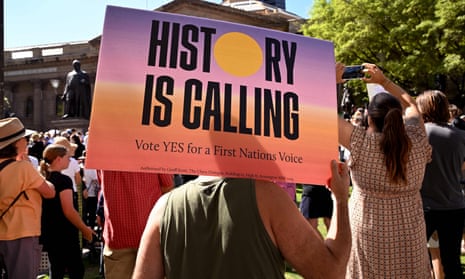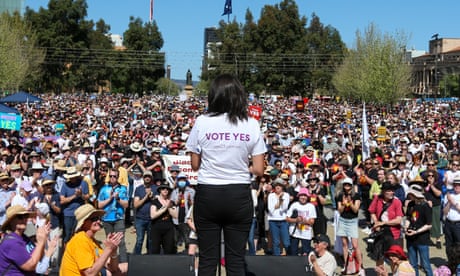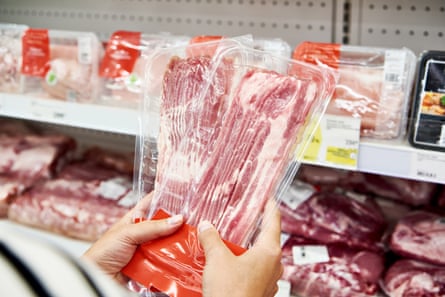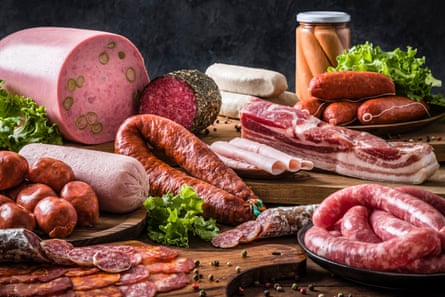Miranda Nazzaro
Sun, September 17, 2023

United Auto Workers (UAW) President Shawn Fain said Sunday he has not endorsed President Biden for the 2024 election because the union “expects actions, not words” from the president.
Asked on CBS’s “Face the Nation” what it will take to endorse Biden, Fain said, “Our endorsements are going to be earned. We’ve been very clear about that, no matter what politician.”
When asked how Biden can earn the endorsement, Fain said, “We expect actions, not words.”
Fain referenced comments over the Biden administration’s recent attempts to interject in the UAW’s negotiations with three major automakers — Ford, General Motors and Stellantis.
“This negotiating … our negotiators are fighting hard,” Fain said. “Our leadership is fighting hard. It’s going to be won at the negotiating table with our negotiating teams, with members manning our picket lines and our allies out there.”
Fain’s comments come after Biden said last week he was sending acting Labor Secretary Julie Su and senior aide Gene Sperling to Detroit to help reach a “win-win” contract for the companies and their employees.
“Who the president is now, who the former president was or the president before them isn’t going to win this fight,” Fain continued. “This fight is all about one thing — it’s about workers winning their fair share of economic justice instead of being left behind as they have been in the last decades.”
UAW workers began a strike against the automakers last week after ongoing negotiations failed and the workers’ contracts expired.
The union is asking for wage increases, cost-of-living pay raises, a 32-hour work week with 40 hours of pay, union representation of workers at new battery plants and restoration of traditional-defined benefit pensions for new hires who now receive only 401(k)-style retirement plans and pension increases for retirees.
Last week, former UAW President Bob King said Biden “should have done a lot more already” to assist striking autoworkers. In an interview with NewsNation’s Chris Cuomo, King said he also backed Fain’s decision not to endorse Biden over concerns about federal electric vehicle (EV) policies.
The Biden administration has pushed for an industry shift to EVs, which require fewer workers to make, sparking concerns over how such a transition could impact workers jobs and pay.
NewsNation is owned by Nexstar Media Group, which also owns The Hill.
Monica Alba and Jesse Kirsch and Will Ujek
Sun, September 17, 2023

A team that President Joe Biden dispatched to help resolve the strike between the U.S.’ largest autoworkers union and the Big Three auto companies plans to be in Detroit to support talks “early in the week,” an administration official said Sunday.
Biden named White House adviser Gene Sperling and acting Labor Secretary Julie Su last week to go to Detroit to help reach a deal to end the walkout by the United Auto Workers union, which began early Friday. Sperling has been the point person on key issues connected to the union and the companies, and he has been coordinating with Su.
"Both Sperling and acting Secretary Su are engaging with the parties by phone, as they have for weeks, with the intention of being there early in the week," the official said, adding that the administration was "pleased that the parties are continuing to meet as they had been before the contract expired."
United Auto Workers members strike at the Ford Michigan Assembly Plant
Su and Sperling's goal was not to serve as mediators or intervene but to "help support the negotiations in any way the parties feel is constructive," the official said.
Biden said Friday that he hoped that the UAW and the Big Three returned to negotiations.
After talks collapsed, Biden said he understands workers’ frustrations that as automobile companies register “record profits,” they haven't “been shared fairly, in my view, with those workers.”
“Let’s be clear: No one wants a strike,” he said at the White House. “But I respect workers’ right to use their options under the collective bargaining system.”
The strike is a particular challenge for Biden, who has called himself “the most pro-union president you’ve ever seen.” While the UAW has historically supported Democrats like Biden, former President Donald Trump won important backing from blue-collar autoworkers.
Before the strike was declared, UAW President Shawn Fain said a walkout would force Biden and other politicians to pick sides when it comes to organized labor.
On Friday at midnight, about 13,000 members of the UAW walked out of a General Motors site in Missouri, a Stellantis center in Ohio and a Ford assembly plant in Michigan.
If every UAW member struck immediately, the union would have enough funds to supply about 11 weeks of strike pay.
This article was originally published on NBCNews.com
John L. Dorman
Sun, September 17, 2023

United Auto Workers members attend a rally in Detroit, Mich., on September 15, 2023.
The UAW union late last week went on strike to pressure the "Big Three" to raise worker wages.
The strength of President Biden's economic message could hinge on the outcome of the strike.
Biden has sought to sharpen his 2024 economic pitch, but voters aren't fully sold on his message.
Shortly after Joe Biden launched his 2020 presidential campaign, his first major rally was held at a Teamsters union hall in Pittsburgh, where he extolled the virtues of middle-class Americans.
Referring to himself as a "union man," Biden mapped out of his vision of an economy that would empower ordinary citizens by lifting wages and targeting financial loopholes that favored big businesses.
"The country wasn't built by Wall Street bankers, CEOs, and hedge-fund managers. It was built by you," he told the receptive audience in April 2019.
That was over four years ago.
Biden is now sitting in the Oval Office, and the United Auto Workers strike is giving him the most challenging labor crisis of his presidency, as the economic pitch for his reelection bid could sink or swim depending on the outcome.
The UAW, which represents almost 150,000 autoworkers, began a strike on Friday against the "Big Three" automakers — Ford, General Motors, and Stellantis. It is the first time that there have been simultaneous strikes at the three Detroit automakers. (At the moment, only three plants — a Ford factory in Wayne, Michigan; a GM assembly plant in Wentzville, Missouri; and a Stellantis Jeep plant in Toledo, Ohio — are striking. But more factories could be added to the list depending on how negotiations move along.)
The union is calling for more robust benefits and the elimination of "tiered" compensation, the latter of which occurs when workers are paid different rates for performing the same work.
But perhaps the biggest sticking point for the UAW is the push to raise wages.
The UAW is now calling for a 36% increase in general employee pay for across a four-year period, mirroring the 40% chief executive pay bump that union leadership says has occurred over the past four years.
And Biden is clearly listening.
Late last week, he sent acting Labor secretary Julie Su and White House economic advisor Gene Sperling to Michigan "to offer their full support for the parties" in the contract talks.

President Joe Biden is seeking reelection to a second term.AP Photo/Susan Walsh
And the president last week spoke on the wide disparities in CEO pay compared to workers on the floor.
"I've been in touch with both parties over — since this began over the last few weeks. And over the last — the past decade, auto companies have seen record profits, including the last few years, because of the extraordinary skill and sacrifices of the UAW workers," he said at the White House. "But those record profits have not been shared fairly, in my view, with those workers."
"Unions raise workers' wages, they said — incomes — increase homeownership; increase retirement savings; increase access to critical benefits, like sick leave and childcare; and reduce inequality — all of which strengthen our economy for all workers," he added.
This is the sort of pitch that Biden has sought to use in next year's election, but especially in Michigan, which is a critical part of the blue-state coalition that he hopes to assemble.
But ahead of any agreement coming to fruition in the next few days, the Biden team might want to send some emissaries to factories across the Midwest, where discontent with the president among some auto workers is simmering, according to a report from Politico's Adam Wren.
Denny Butler, a union committeeman in Kokomo, Ind., told the outlet that he wasn't backing Biden or former President Donald Trump at the moment. And he also criticized both political parties.
"They're all full of shit," Butler said.
"Historically, man, if you didn't vote Democrat years ago, and you were in the union, sometimes you got your ass kicked," he continued. "Democrats were for the working people. That shit has changed. I'm telling you what, the Democratic Party was not what it was 20, 30 years ago."
As Biden looks to lay out his economic plans to working-class voters across the country, most of whom have endured inflation exacerbated by the COVID-19 pandemic and supply-chain issues, the fallout from the UAW strike could inform the opinions of voters across the political spectrum next year.
Voters will ask: Does the economy work for me?
The president will have to continue listening to workers to effectively make his case.
Nick Robertson
Sat, September 16, 2023

Former President Obama backed the United Auto Workers strike on Saturday, telling automakers that it’s time to “do right” by workers.
“Fourteen years ago, when the big three automakers were struggling to stay afloat, my administration and the American people stepped in to support them,” Obama said on X, the platform formerly known as Twitter. “So did the auto workers in the UAW who sacrificed pay and benefits to help get the companies back on their feet.”
“Now that our carmakers are enjoying robust profits, it’s time to do right by those same workers so the industry can emerge more united and competitive than ever,” he added.
UAW began a strike against the “Big Three” automakers — Ford, General Motors and Stellantis — early Friday morning, a first in the union’s history, after negotiations failed before reaching the end of the workers’ contracts. The union is demanding increased wages, shorter work weeks and better retirement benefits.
Profits at the Big Three firms increased by 92 percent in the last decade and CEO pay increased by 40 percent in the same period, according to an analysis from the Economic Policy Institute.
“We are committed to winning an agreement with the Big Three that reflects the incredible sacrifice and contributions UAW members have made to these companies,” UAW President Shawn Fain said in an address Thursday.
In late 2008, weeks after Obama’s first election, the Bush administration announced a nearly $18 billion bailout for major automakers wrecked by the recession. Congress later invested about $80 billion of federal funds into Detroit automakers during the Obama administration, losing about $11 billion on its GM investment alone by the time the government sold the shares in 2013.
The Biden administration has also backed the UAW strike and President Biden encouraged automakers to return to the bargaining table with an increased offer on Friday.
“I believe they should go further… Record corporate profits, which they have, should be shared by record contracts for the UAW,” Biden said.
Strikes are limited to a small number of specific plants chosen by union leadership hours before they begin. The pop-up strike tactic is meant to “keep the companies guessing,” Fain said.


















